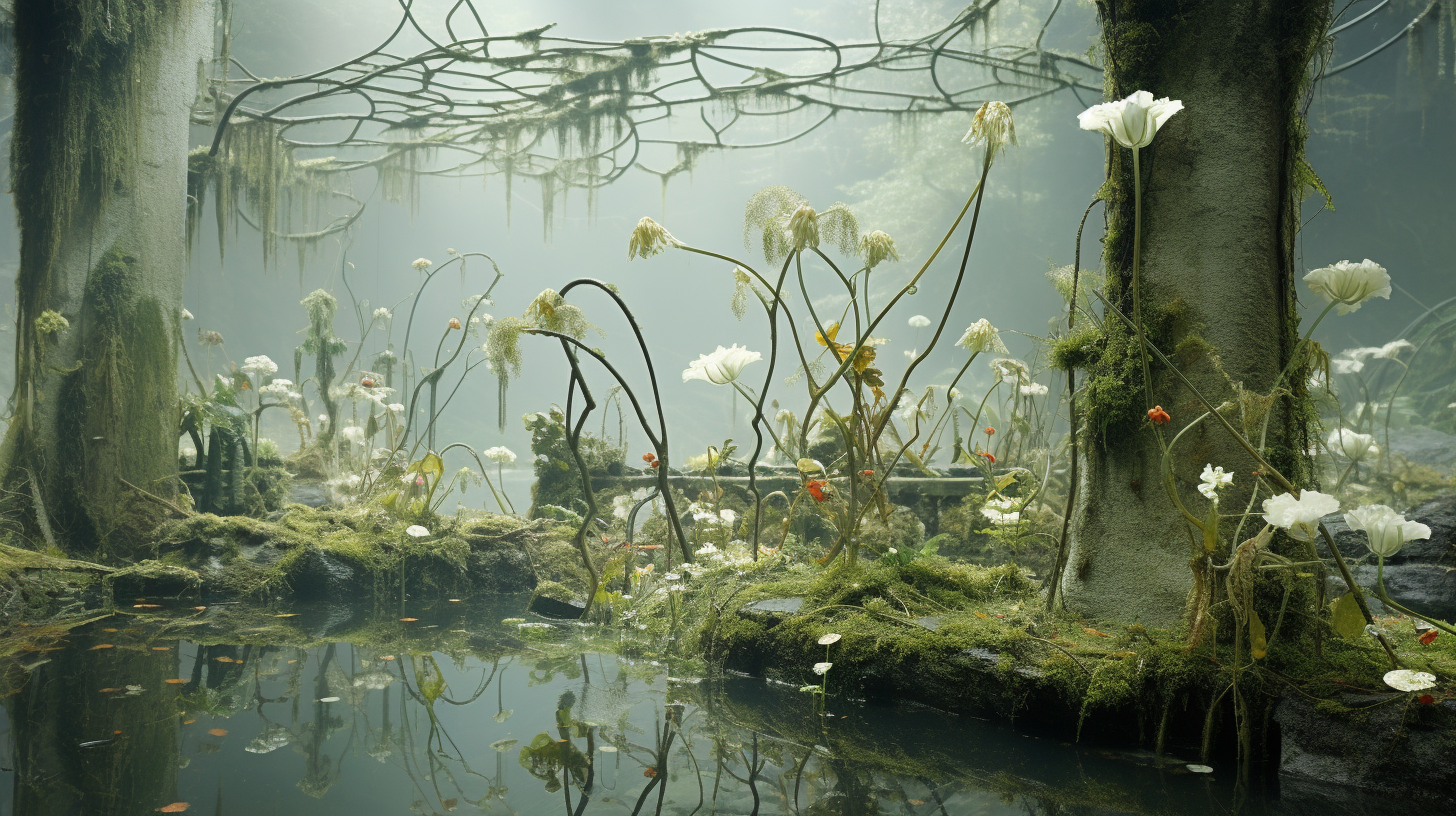In a hue-dimmed world cloaked in perpetual shades of grey, where the skies weep soot and the very air is heavy with the lament of ecological devastation, one might struggle to conjure memories of verdant splendor. Yet, amid this bleak vista, a spark of the extraordinary persists—remnants of botanical marvels that defy the surrounding desolation, buried treasures in a world succumbed to greyscale torment.
As we traipse through the ash-laden wastelands, it is not only the monolithic silence that greets us, but the gnarled whispers of resiliency. Here, in the crevices of despair, lie the ‘Forgotten Flora’, botanical oddities that, against all odds, gasp for life in the grimmest of gardens. These are no ordinary plants; they are relics of resistance, hallowed fragments of Earth’s once-lush tapestry, now but a fable in our collective memory.
‘In them, we glimpse endurance, but it’s a defiant act, akin to reading poetry to a wall—hope is a luxury lost,’ murmurs a passerby, their silhouette a blur against the shadowed ruins. However tattered, however ambiguous their survival might be, the Forgotten Flora inspires a perverse sort of fascination. In a testament to their obstinate vitality, there exists the Bleak Blossom, a flower birthed from ash, thriving only where others have surrendered to decay. Its charcoal petals, a parody of beauty, are splayed open in a sneer rather than a smile—a floral embodiment of the macabre.
Then, amidst cracked soil and rusted metal, resilient to the heavy metals poisoning its kin, a Steel-Stemmed Sapling has sunk its roots not into earth, but into ruin. It draws life from desolation, reaching upward with an ironclad will, born from disaster, almost as if mocking our own fragility.
Further afield, caught in an eternal struggle against invasive species lies the Heirloom Helix Vine, a botanical spiral of gnarled green that clings to the skeletons of infrastructure, an eerie echo of the Green Plague that once threatened to swallow all. Where the vine stretches, the remnants of man-made monuments are smothered in a grip that tightens with the days, a creeping reminder of the indomitable force of untamed growth.
In eerie underwater locales, akin to the ‘Dead Zones’ of our oceans, flora has not just surrendered to the alien environment; it has adapted. Enter the Abyssal Amphibious Algae, a bizarre hybrid that flourishes on both land and sea, mocking the barriers that once dictated the limits of life. Once thought extinct, these amphibious curios now form alien tapestries upon the seafloor, in grotesque harmony with the tubeworms and extremophiles that have claimed these haunted depths.
Amid these discoveries, there are those who whisper of the Phoenix Fern, a cryptic plant alleged to arise from fires, a botanical phoenix mating life with flame. Perhaps myth, perhaps a metaphor, the Phoenix Fern captures our longing for rebirth from destruction, a resurrection promise from ashes we are yet to see fulfilled.
This unearthed cadre of flora presents a chronicle of survival in a world beyond the brink. It is both a grotesque carnival and a silent ovation to life’s stubborn insistence. Drawn to these botanical anomalies, we are compelled by a desire to unravel their secrets, to seek understanding, or perhaps, to find a measure of solace in their improbable existence.
In their twisted forms and stubborn growth, the Forgotten Flora permits us a glance into the heart of nature’s archival survival instincts, even as they stir an unsettling curiosity within us. We are left to ponder what other secrets lie nestled beneath the smog and soot, what stories of life persisting in the face of insurmountable odds remain untold.
For now, we trudge through this blasted Eden, mesmerized by the stubborn, resilient life, a stark, blooming contradiction in a world of ash. These botanical marvels, imbued with a vitality equal parts harrowing and awe-inspiring, stand as living enigmas in a tapestry torn by human folly, and there’s an uncomfortable beauty in that paradox that keeps us entrenched in their tales of survival.
